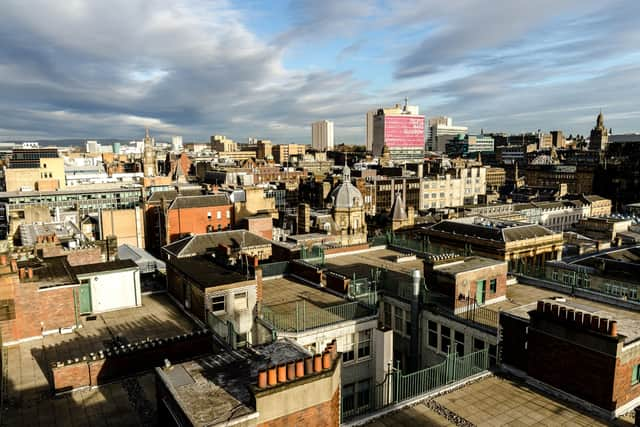Consultation to be held on plan for controversial ‘People First Zone’ in Glasgow city centre
and live on Freeview channel 276
Glasgow City Council has developed the draft City Centre Transformation Plan (CCTP) for 2022-32, which aims to create a healthier, sustainable and more integrated transport network for the city centre.
However, the plan has not been without its critics. Later this year people will get a chance to voice their support or opposition to the plan.
Advertisement
Hide AdAdvertisement
Hide AdWhat does the plan aim to do?
The plan focuses on promoting active travel, public transport use and car and ride sharing, rather than single-occupancy car use.
It aims to achieve this by ‘re-balancing’ city centre streets and public spaces. This includes re-allocating road space for active travel and green infrastructure, improving public transport and supporting/encouraging people to walk, cycle and use public transport, with the aim of getting 80 per cent of peak time travel to be via active travel and public transport by 2030.


Other aims include achieving a 30 per cent reduction in peak hour private car traffic in the city centre by 2030, doubling the city centre population by 2035, and helping Glasgow get carbon neutral by 2030.
How will it achieve these goals?
A number of projects aimed at achieving these goals are already in development.
Advertisement
Hide AdAdvertisement
Hide AdA consultation on the future of George Square is due to end this week. It is asking participants about ideas such as banning private cars and adding a water feature.
It is part of the wider Avenues project - a £115m scheme funded by the Glasgow City Region City Deal. It has already involved an active travel route for pedestrians and cyclists on Sauchiehall Street.
Other projects include the transformation of the Broomielaw and Clyde Waterfront, people-friendly streets, the proposed Mitchell Plaza and Charing Cross scheme, and the Buchanan Street gateway.
However, perhaps the most controversial part of the scheme is the development of the ‘People First Zone’ in the city centre.
Advertisement
Hide AdAdvertisement
Hide AdAccording to the council: “The proposal - bounded by Hope Street, Cowcaddens Road, North Hanover / Glassford Street and Howard Street - would see the creation of an area of high-quality public realm where people are able to easily and safely walk and wheel around, and where feel that they - and not vehicles - have priority.
“In the People First Zone, crossing points would be much wider and pedestrians will have less distance and more time to cross the road in an environment that feels much more pleasant with less noise and cleaner air. While access would still be available for pick up and drop off at the key transport hubs and disabled access would be maintained, the creation of this zone would enable the space to be re-purposed for other purposes such as fully integrated active travel provision, civic spaces, pocket parks or parklets and street cafes.
“If the proposal was approved, it would be delivered on a phased basis and completed by 2027. The zone would tie in with the proposed masterplans for the Buchanan Galleries and St Enoch Centre.”
Under the plan, vehicle access would be limited to “essential trips”, such as for disabled people, residents and businesses, and “continuous” walking, wheeling and cycle routes would be provided.
Advertisement
Hide AdAdvertisement
Hide AdThere would be exemptions for public transport, taxi movements and emergency services and retained multi-storey car parks would be accessible without the need to access the zone.
What are the benefits?
The plan aims to make the city centre attractive for Glasgow residents, workers, students, businesses, visitors and investors.
According to Glasgow City Council: “The CCTP is expected to bring key benefits in terms of improved place quality and economic vibrancy, assisting the transition to net-zero, improving residents’ health, well-being and quality of life and an enhanced quality of experience for visitors to the city centre as the area’s streets will be cleaner, greener and less congested.”
When will the consultation run?
Glaswegians will be consulted on the plans following the local elections in May.
The process will run for six weeks.
A final decision will be made on the plan in September 2022.
Comment Guidelines
National World encourages reader discussion on our stories. User feedback, insights and back-and-forth exchanges add a rich layer of context to reporting. Please review our Community Guidelines before commenting.
